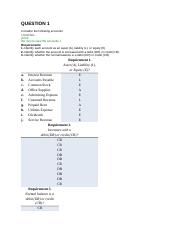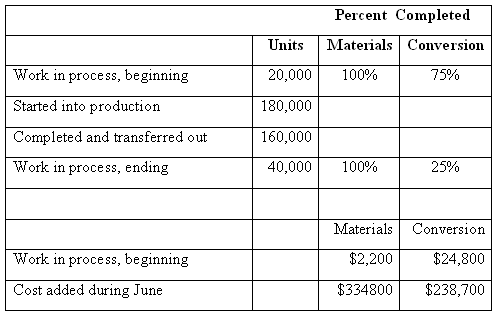Content

In this way, you will be able to spot relevant trends in these keys ratios when you project them, and help you reconcile results from the past with the results you are projecting. Now that we have an understanding of how to model Revenue and Expenses, this chapter will build on that understanding. We will walk through each key step in building and forecasting a three-statement operating model for a company. Inventory management involves a retailer seeking to acquire and maintain a proper merchandise assortment while ordering, shipping, handling, and related costs are kept in check. This would include the monitoring of material moved into and out of stockroom locations and the reconciling of the inventory balances. It also may include ABC analysis, lot tracking, cycle counting support, etc.

Chances are, many of the questions regarding your forecast may be typical of what you already consider when managing the company’s day-to-day operations. Nobody knows your business as well as you do, so it is essential to ask questions, have discussions about the reasonableness of the forecast, and make adjustments as necessary. Remember, the more realistic your projections, the less subjectivity needed to value the company.
Best, worst, and normal case projections
The use of raw material by non-human species includes twigs and found objects as used by birds to make nests. If that doesn’t work, you could just set these items to a % of revenue instead and simplify the whole process. For “random items,” such as Maintenance Provisions on a company’s Balance Sheet, you can always try to match them with the relevant Income Statement line items.
- You don’t need to be an appraiser to think through these types of questions.
- The financial targets are metrics that the company has to meet for success and survival in the competitive environment and industry.
- The formula for target volume will be familiar to those who have performed break-even analysis.
- Serving legal professionals in law firms, General Counsel offices and corporate legal departments with data-driven decision-making tools.
Depending on your goals, these statements will cover different time spans. If you’re creating a financial forecast for your planning purposes, you should create pro forma statements covering six months to one year in the future. The financial assumptions can either enhance or Projecting Income Statement Line Items significantly harm your business plan’s chances of assisting you in the capital-raising process. By doing the research to develop realistic assumptions, based on actual results of your or other companies, the financials can bolster your firm’s chances of winning investors.
Income Statement Projection Guide
Medium and long-term growth should be based on the company’s sustainable growth rate . The financial projections allow the top management to detect early warning signs for business performance and enable a business to catch potential deviations. Financial StatementsFinancial statements are written reports prepared by a company’s management to present the company’s financial affairs over a given period . Expenses impact the income statement because they lower the income tally. When inventory is sold, its value moves from the balance sheet to the income statement. Income statement is a company’s financial statement that indicates how the revenue is transformed into the net income during a certain period of time.
In contrast, sober, well-reasoned financial assumptions and projections communicate operational maturity and credibility. Of course, your financial assumptions should accurately reflect the information you’ve given in your business plan and they should be reasonably accurate. Depending on the country, taxes can quickly add up to +20% of income before taxes and as such taxes represent a significant forecasting item. On the flip side, if a business is estimated to be making net losses for a period, the business is also building up deferred tax assets which can be used to offset taxes on future net income. In such a case, it could become necessary to give taxes their own separate schedule as well. Helps in the determination and planning of the requirements of working capital for the success of the business operations. Operating ExpensesOperating expense is the cost incurred in the normal course of business and does not include expenses directly related to product manufacturing or service delivery.
Part 8 – Financial Summary
As importantly, the more realistic financials will also provide a better roadmap for your company’s success. As much as possible, the financial assumptions should be based on actual results from your or other firms. As the example above indicates, it is fairly easy to look at a public company’s operating margins and use these margins to approximate your own. Likewise, the business plan should base revenue growth on other firms. While SG&A expenses are generally considered more fixed in nature than COGS, they should still be forecast as a percentage of sales. It is common to forecast SG&A as a single line item but analysts and investors could also go a level deeper and forecast by individual items which could be correlated to revenue to varying degrees. Projections need a solid base in reality and this is done by using historical financial data to form relationships which can then be carried forward into future years.
What’s Included in an income statement?
The items on a multi-step income statement are divided into sections that separate operating revenue and expenses from the results of non-operating activities, taxes and extraordinary items.
They can range from financial forecasts about costs, revenue, return on investment, and operating and startup expenses. Basically, financial assumptions serve as a forecast of what your business will do in the future. You need to include them so that anyone reading your plan will have some idea of how accurate its projections may be. We helped the client prepare some basic financial projections https://online-accounting.net/ using the owner’s insight into future growth and changes in profitability. We based the projections on the historical financial statement information and the client felt comfortable with the forecast. After adding in those expenses, the company’s profitability moved considerably lower. The change in future profitability essentially cut the company’s valuation by more than 25%.
Plan for the Unexpected
Based on this analysis, we will then present how to forecast these costs to arrive at the projected figures in Figure 7. For companies that operate on a subscription model, the simple example in Figure 4 can help project future revenue. Many subscription-based businesses (Software-as-a-Service, or SaaS, companies, for instance) assess future revenue growth via annualized recurring revenue or monthly recurring revenue rates.
A good centralized data source for income tax rates by country is KPMG’s Corporate Tax Rates Table. We would also recommend looking at PwC’s Worldwide Tax Summaries Online database, which provides summarized information for corporate and individual tax rules for over 150 countries worldwide. This is a great way to identify if there are other local tax rates to consider in your income tax calculation. If you must go through projecting changes in interest rates, the task requires a bit of research. Several quantitative methods have been developed to predict future interest rates. We are not making investment decisions with our forecasted interest rates, so we will not suggest one of these complicated models. You are likely to have more than three expenses and many of your costs may be somewhat nominal in magnitude.
